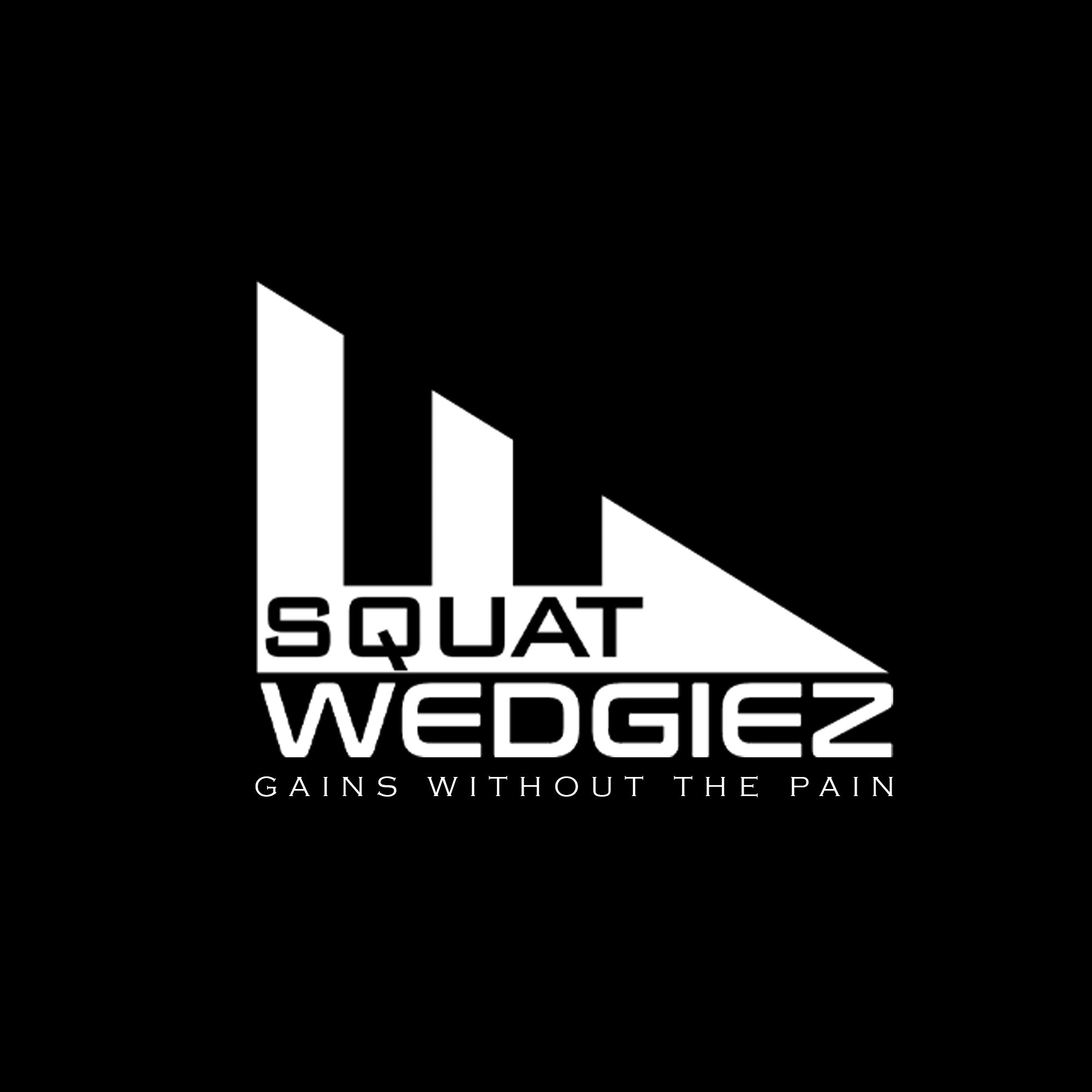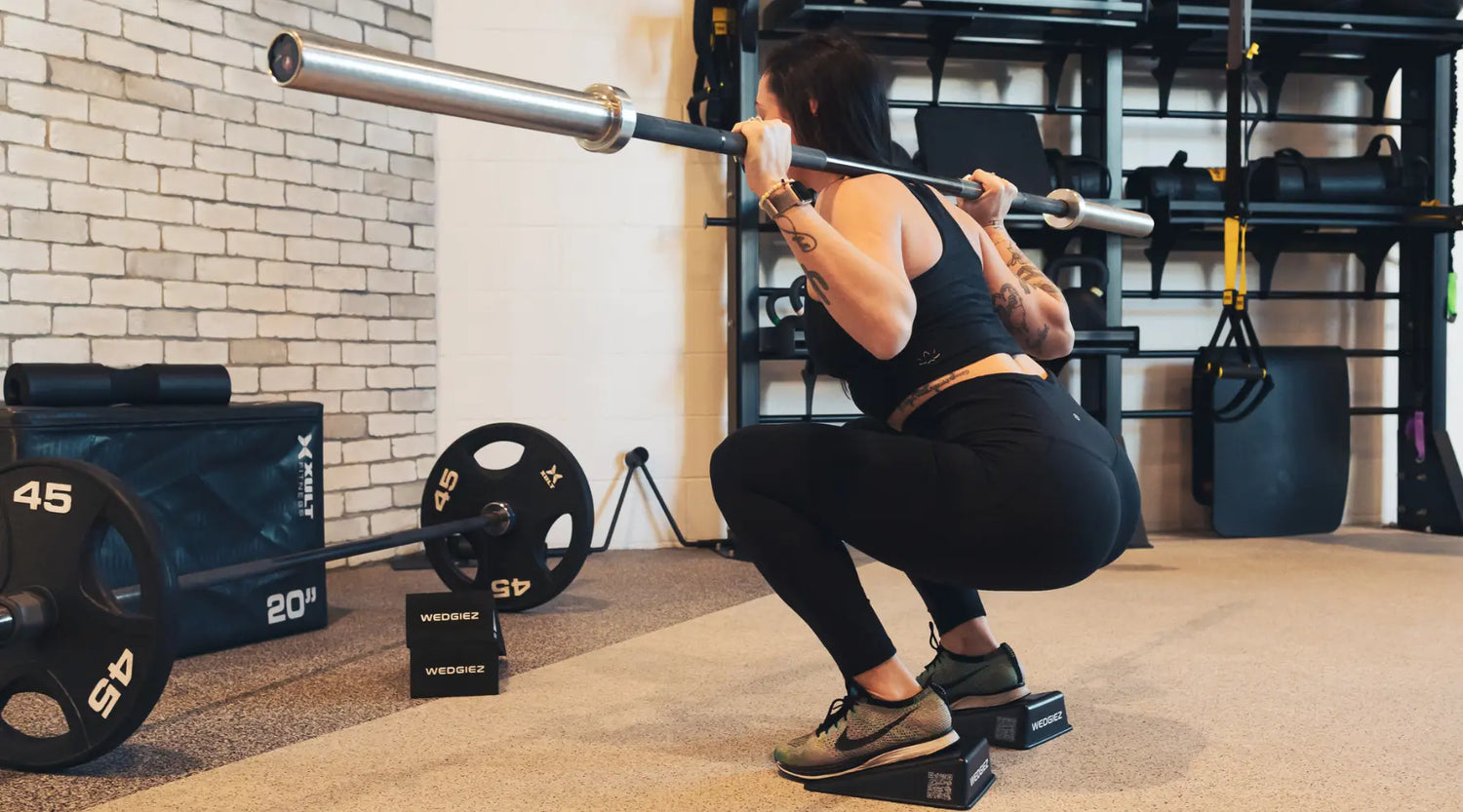Squatting is one of the fundamental movements in any fitness routine (and life!), yet achieving an efficient squat can be a challenge for many. Enter wedges—a simple and often overlooked tool that can improve squat mechanics and elevate performance. For the right person, wedges can be a powerful asset in making your squats not only feel better, but more effective.
Let’s explore how and why wedges can be a game-changer:
The Squat vs. Hinge Debate
First, it’s crucial to understand the difference between a squat and a hinge. Hinges primarily engage the hips, a movement where the pelvis moves primarily horizontally - forward and backward. Think of deadlifts as a prime example. Squats, on the other hand, are knee and hip dominant, following a vertical pattern with the pelvis moving up and down. This fundamental difference is key to appreciating how wedges can enhance your squat!
The Benefits of Using Wedges in Your Squats
Wedges can be particularly beneficial in various scenarios:
1. Long Femurs, No Problem:
If you’re blessed with long femurs, you will find your butt moving back further as you descend into a squat. This requires you to lean your torso forward to avoid toppling backward. A wedge shifts your weight slightly forward and gives you artificial length in the lower leg (tibia), reducing the need for an excessive torso lean and allowing your squat to have more balanced hip and knee bend.
2. Overcoming Ankle Mobility Issues:
Limited ankle mobility can prevent you from achieving full squat depth. Wedges alleviate the need for ankle dorsiflexion, allowing you to squat deeper and load your muscles through greater range of motion. This means you can get the full benefits of squatting without being held back by your ankles, and can continue to squat as you do the work to improve your ankle mobility, if it’s a goal of yours!
3. Overcoming Hip Mobility Issues:
Poor hip mobility can also make it challenging to squat with full range of motion. Wedges allow us to maintain a relatively vertical torso, reducing the required bend at the hips, which can be more comfortable if you lack range of motion there. Like limited dorsiflexion, this lack of hip mobility is something that can be addressed while still training the squat pattern!
4. Maximizing Foot Stability:
The old myth of putting weight only in the heels is dead! For optimal force production, it’s essential to distribute weight across your entire foot during squats. Wedges help keep the weight balanced across your entire foot, enhancing stability and allowing for greater force production for a stronger, more controlled squat.
5. Increased Eccentric Load on Quads:
Squatting deeper with wedges places a greater eccentric load on your quads. Eccentric strength is crucial for functional activities like descending stairs and overall lower body resilience. Plus, muscle gains!!
6. Improved Core Control and Pressure Management:
Elevating your heels with wedges makes it easier for you to maintain a stacked ribcage over pelvis. This alignment optimizes pressure management, core control, and spinal stiffness, allowing you to use the hips to generate force and have stable, strong and efficient squats.
Real-World Advantages of Using Wedges
Incorporating wedges into your squatting routine can lead to significant real-world benefits:
1. Deeper Squat, Better Gains:
Wedges enable you to achieve greater squat depth, leading to better muscle activation in the quads, glutes, and hamstrings. This increased range of motion can result in improved muscle growth and strength gains over time.
2. Joint-Friendly Squats:
Wedges can reduce stress on the knees and lower back by promoting balanced weight distribution. This can be especially beneficial for those with pre-existing joint issues or susceptibility to knee and back pain, making squats immediately accessible.
3. Enhanced Balance and Stability:
Proper balance and stability are critical for effective squatting. Wedges help maintain your center of gravity, preventing excessive forward or backward leaning.
4. Optimized Muscle Engagement:
Wedges enhance muscle engagement by allowing for a more upright torso and better hip and knee alignment. This improved alignment ensures that the targeted muscles, such as the quads and glutes, are working at their peak, allowing to for strength and hypertrophy gains.
5. Versatility in Training:
Wedges can be used for various squat variations, including front squats, goblet squats, and single-leg squats. This versatility allows you to target different muscle groups and movement patterns, adding variety and complexity to your workout routine.
Conclusion
Using wedges in your squat routine is a simple strategy to improve your technique and enhance muscle engagement. Whether you have long femurs, limited ankle or hip mobility, or struggle with balance, wedges can be a valuable addition to your training arsenal.
Embrace the power of wedges and transform your squat game. Your body—and your performance—will thank you.
Author
Meghan A. Sak-Ocbina, PT, DPT, ATC, CSCS, Pn1





Leave a comment
This site is protected by hCaptcha and the hCaptcha Privacy Policy and Terms of Service apply.